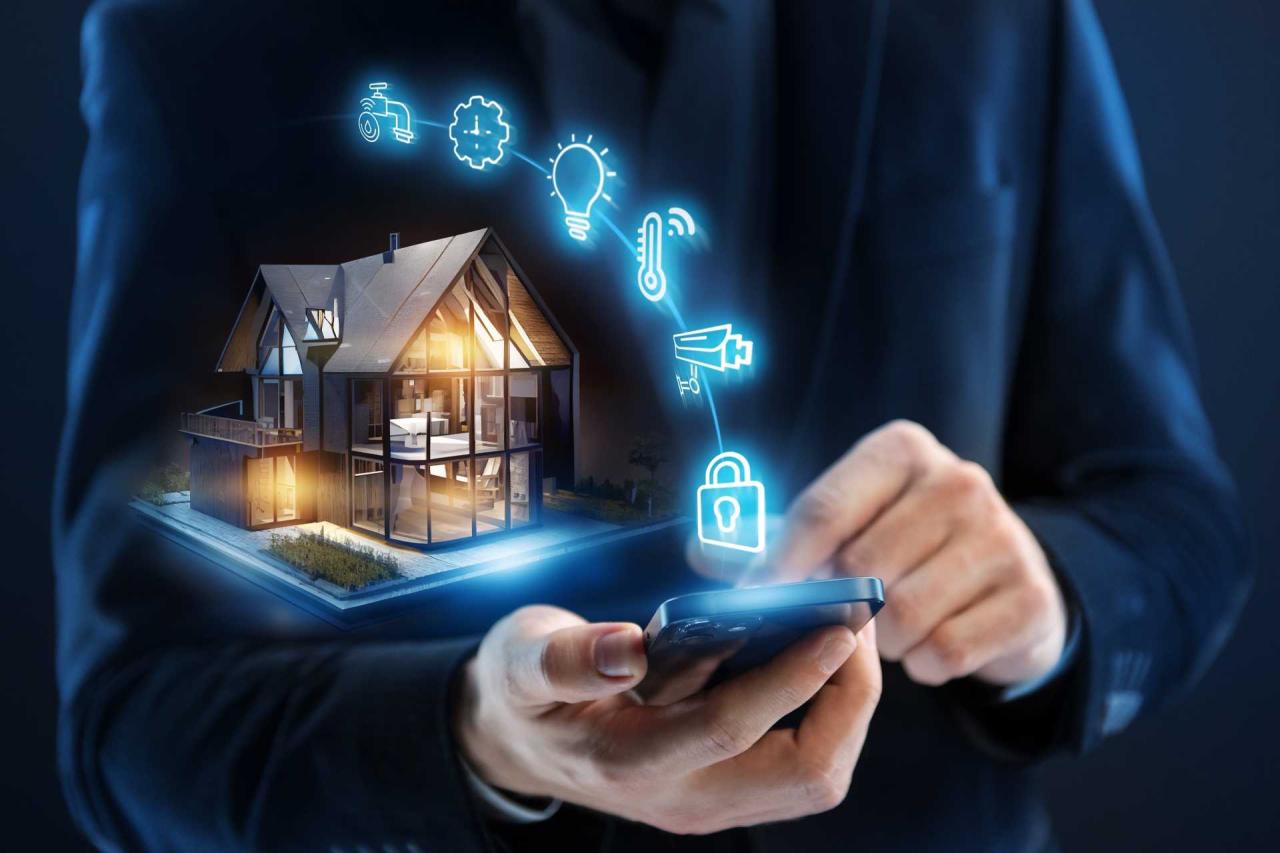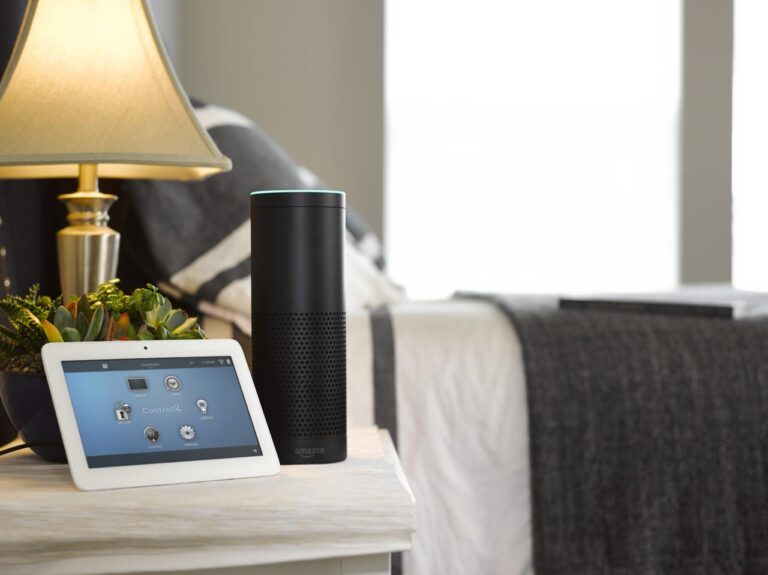The concept of a home that anticipates your needs and responds to your commands has long been a staple of science fiction. Today, the smart home revolution is making that fantasy a reality, transforming our living spaces into intelligent ecosystems that enhance comfort, security, and efficiency. This isn’t just about controlling your lights with a voice command; it’s a profound shift in how we interact with our environment, paving the way for a more connected, sustainable, and personalized way of life. This article will delve into the core components of a smart home, the myriad of benefits it offers, and a practical guide on how to begin your own journey into this futuristic world.
The Pillars of a Connected Home

A truly smart home is a symphony of interconnected devices, all working in concert to simplify daily tasks. This technology is built on several key pillars, each contributing to the overall intelligence of the home.
A. Lighting Automation: Smart lighting systems are often the first step for many homeowners. They replace traditional bulbs with LED versions that can be controlled via a smartphone app, voice command, or pre-set schedules. This allows for unparalleled convenience, as you can turn off all the lights from your bed or set them to come on automatically as you arrive home. Beyond convenience, smart lighting is a powerhouse for energy efficiency, as you can dim lights or turn them off in unoccupied rooms, significantly reducing your electricity consumption. Some advanced systems can even mimic natural light patterns to improve your sleep and overall well-being.
B. Security and Surveillance: One of the most compelling reasons to embrace a smart home is the peace of mind it provides. Smart security systems include a range of devices from video doorbells that let you see who’s at your door from anywhere, to smart locks that allow you to grant temporary access to a guest or delivery person remotely. Motion sensors, smart cameras, and connected alarm systems create a comprehensive shield, monitoring your property 24/7 and alerting you to any unusual activity. This proactive security is a significant upgrade from traditional systems, offering real-time updates and control.
C. Climate Control: Smart thermostats are at the forefront of energy management. These devices learn your family’s daily habits and adjust the temperature accordingly, ensuring the house is warm when you wake up and cools down when you’re away. They can be controlled from your phone, allowing you to fine-tune the temperature from a distance. The energy savings alone can often justify the initial investment, as these systems prevent you from heating or cooling an empty house. Furthermore, some systems can integrate with smart vents and window sensors to optimize airflow and efficiency throughout the home.
D. Entertainment and Connectivity: The modern living room is a hub of smart entertainment. Smart TVs, speakers, and sound systems can be controlled with simple voice commands, creating an immersive experience. Multi-room audio systems allow you to stream music throughout your home, all controlled from a single app. This seamless integration means you can transition from watching a movie to listening to a podcast with just a few words, making entertainment more fluid and accessible than ever before.
E. Voice Control and Virtual Assistants: At the heart of most smart homes are virtual assistants like Amazon Alexa, Google Assistant, and Apple’s Siri. These AI-powered hubs act as the central brain, allowing you to control a vast array of devices using only your voice. From checking the weather to adding items to your shopping list or locking the front door, the ability to command your home without lifting a finger is a game-changer for convenience.
The Unprecedented Benefits of a Smart Lifestyle
The allure of a smart home goes far beyond the “cool factor.” The tangible benefits it provides are a driving force behind its rapid adoption.
A. Unmatched Convenience and Comfort: Imagine waking up to a home that is already prepared for your day. The coffee maker starts automatically, the shades slowly open, and your favorite news podcast begins to play. This level of automation and personalization saves time and effort, making daily routines effortless. The ability to control all your devices from a single smartphone app or with a simple voice command adds a layer of ease to everyday life that, once experienced, is hard to live without.
B. Superior Energy Efficiency and Cost Savings: A smart home is an environmentally conscious home. Devices like smart thermostats, smart plugs, and intelligent lighting systems give you granular control over your energy consumption. By automatically turning off devices when they are not in use and optimizing heating and cooling, a smart home can significantly reduce your utility bills and shrink your carbon footprint. This is a win-win for both your wallet and the planet.
C. Enhanced Security and Safety: Smart security systems offer a new level of protection. The ability to monitor your home remotely, receive instant alerts for unusual activity, and even simulate occupancy when you’re away provides unparalleled peace of mind. For elderly family members or those with mobility issues, smart locks and automated lighting can also provide a crucial layer of safety and accessibility.
D. Increased Accessibility and Support: For people with disabilities, a smart home can be a life-changing development. Voice-controlled systems allow individuals with limited mobility to control their environment independently, from adjusting the thermostat to opening blinds. Smart technology can bridge the gap between physical limitations and daily tasks, fostering a greater sense of autonomy.
E. Boosted Home Value: As smart home technology becomes more mainstream, homes equipped with these systems are becoming more attractive to potential buyers. A smart home is seen as a modern, forward-thinking investment that adds value to a property. The integration of technology is no longer a luxury but an expectation for a high-quality, modern living space.
Your Guide to Building a Smart Home

Embarking on your smart home journey doesn’t have to be overwhelming. The key is to start small and build upon your system over time.
A. Determine Your Needs: Before you buy any gadgets, consider what you want to achieve. Are you looking for more convenience, better security, or energy savings? Answering this question will help you prioritize your purchases and avoid buying devices you won’t use.
B. Choose a Core Ecosystem: The three main ecosystems are Amazon Alexa, Google Home, and Apple HomeKit. Each has its own strengths and a list of compatible devices. Sticking to one ecosystem simplifies the setup and ensures all your devices can communicate seamlessly. Research which one best fits your current devices and preferences.
C. Start Small with a Foundational Device: A great way to begin is with a single device, such as a smart speaker, a smart plug, or a video doorbell. A smart speaker can serve as the hub for future voice commands, while a smart plug can turn any non-smart device into a “smart” one. This approach allows you to learn the technology without a large initial investment.
D. Consider Privacy and Security: With increased connectivity comes the need for robust security. Ensure your Wi-Fi network is secure with a strong password and that you change the default passwords on all your smart devices. Keep your devices updated with the latest software to protect against vulnerabilities.
E. Expand Your System Gradually: Once you are comfortable with your initial devices, you can begin to expand. Add smart lighting to a new room, install a smart thermostat, or integrate a smart security camera. This modular approach allows you to build a comprehensive system at your own pace and budget.
Conclusion
The smart home revolution is not a temporary trend but the inevitable evolution of how we live. We are moving beyond the simple concept of a dwelling and into an era where our homes are active participants in our daily lives—anticipating our needs, protecting our families, and conserving our planet’s resources. This shift is being driven by our innate desire for comfort, efficiency, and a lifestyle that is more aligned with the demands of the modern world.
The deep and enduring value of smart home technology lies in its ability to empower us. It gives us greater control over our environment, automates mundane tasks, and provides a level of security that was once unimaginable. As the technology becomes more affordable and user-friendly, its adoption will only accelerate, making it a standard feature of every new home. This isn’t a luxury; it’s a foundational change that enhances our quality of life in countless ways. By embracing the smart home revolution, we are not just upgrading our houses; we are investing in a future that is more convenient, secure, and sustainable for generations to come.










